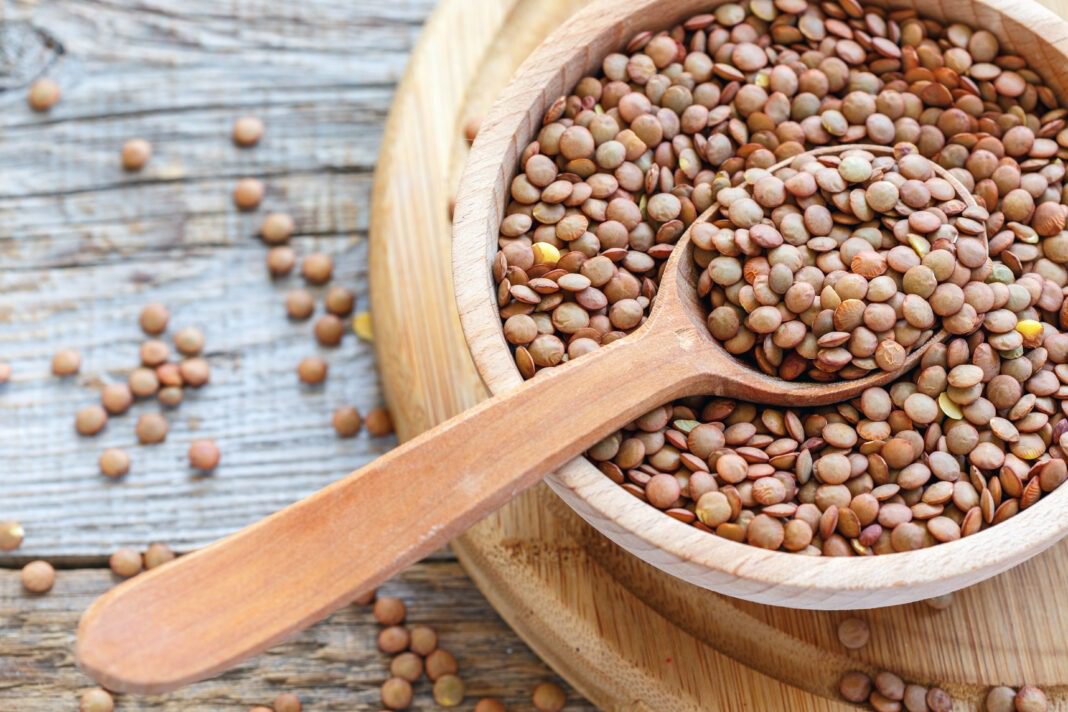Introduction
Lentil belongs to Lens culinaris species of Family Fabaceae or Papilionaceae. It is one of the ancient cultivated crops and is an excellent supplement to cereal-based diets. The following article defines the benefits of lentils and Lentil how to cook.
Lentil is rich in protein and is also cheaper than a regular protein source. It contains twice the amount of protein compared to other cereals like oats, barley, and rice. Protein is the major source of calories thus making it the third-highest level of protein by weight of any other legumes or nuts (1).
Major health benefits of lentils are reduced risk of cardiovascular disease, cancer, diabetes, osteoporosis, hypertension, gastrointestinal disorders, adrenal disease, and reduction of low-density lipoprotein (LDL) cholesterol.
Types of Lentils
Lentils are differentiated into many types depending on their color, cultivar, and composition of seed coats and cotyledons (2). There are basically 5 to 6 types of lentils based on color and two types based on the size of the seed.
Types of lentils based on color
- Yellow Lentils
- Orange Lentils
- Red Lentils
- Green Lentils
- Brown Lentils
- Black Lentils
Types of lentils based on size
- Chilean or large-seeded lentils – Greater than 50 grams per 1000 seeds
- Persian or small-seeded lentils – 45 grams or less per 1000 seeds.
Nutritional value of lentils
Lentils are rich in protein (20-30%), An adult needs 85 grams of pulses per day to fulfill its daily protein requirements.
| Compound | Amounts per 100 g. |
| Water | 8.26 g |
| Energy | 352 kcal |
| Protein | 24.63 g |
| Total lipid (Fat)s | 1.06 g |
| Carbohydrates | 63.35 g |
| Dietary Fiber | 10.7 g |
| Ash | 2.71 g |
| Sugar | 2.03 g |
| Vitamins | |
| Folates | 479 µg |
| Niacin | 2.60 mg |
| Riboflavin | 0.21 mg |
| Thiamin | 0.87 mg |
| Pantothenic acid | 2.14 mg |
| Vitamin B-6 | 0.54 mg |
| Vitamin E | 0.49 mg |
| Vitamin C | 4.5 mg |
| Vitamin K | 5 µg |
| Vitamin A | 39 IU |
| Minerals | |
| Calcium | 35 mg |
| Iron | 6.51 mg |
| Magnesium | 47 mg |
| Manganese | 1.39 mg |
| Phosphorous | 281 mg |
| Zinc | 3.27 mg |
| Copper | 0.75 mg |
| Sodium | 6 mg |
| Potassium | 677 mg |
| Selenium | 0.1 µg |
Health Benefits of Lentils
1. Healthy pregnancy diet
Lentils are rich in folate, minerals like iron, zinc, copper, manganese, molybdenum, selenium and boron, and vitamins. These compounds are very important for a healthy balanced diet especially for adolescents and pregnant women.
2. High source of proteins
Lentils are the easiest and cheapest protein source to meet daily protein requirements. These legumes contain essential amino acids and we all know that these are the building block of proteins. So having lentils in the form of sprouts daily is good for normal development, reproduction, lactation, and immunity (3).
3. Energy source
Lentils contain starch and carbohydrates and several other vitamins. Having lentils in the diet makes the body feel light and energetic.
4. Antioxidant
Lentils are rich in antioxidant compounds and Vitamin B and Beta-carotene and tannins. These compounds help in protecting from deadly diseases like cancer, cardiovascular diseases and also helps in the reduction of blood lipid (4).
5. Improves digestion
High fibers in lentils help in easy digestion and absorption of water and carry all the waste from the digestive tract (5).
6. Controls diabetes
Lentils help in improving blood glucose level, lipid, and lipoprotein metabolism. Lentils help in lowering the fasting blood sugar and glycemic index in diabetic persons (6).
7. Prevents obesity
Obesity is nowadays becoming a more and more lifestyle-related problem. Lentils are an easy solution to obesity. As it is rich in carbohydrates and fibers with low calorific value. Therefore suppresses fat accumulation and reduces appetite (7).
8. Lowers cholesterol
Phytosterols and β-glucan of legumes help in the reduction of total cholesterol of the body. It also reduces LDL cholesterol and increases HDL cholesterol. Which further protects from cardiovascular disease (8).
9. Prevents Parkinson’s disease
Red lentils contain quercetin a type of secondary metabolite which reduces the muscular rigidity of the brain (9).
Side effects of lentils
1. Allergy
Persons who are allergic to legumes should avoid eating lentils.
2. Flatulence and constipation
This is a common type of side effect of eating too many lentils. It causes abdominal discomfort and gas in the digestive system.
Lentil how to cook some healthy recipes
Some of the easy recipes of lentils and how to cook are given below
1. Sprouts

Lentil sprouts are easy to prepare and can be eaten raw or roasted or with other salads, yogurt.
2. Lentil Soup
Lentil soup is prepared with lentil broth and lentil with seasonal fresh green vegetables and spices, onion, tomato, garlic, and oil.
Recipe and steps
- Heat the pan and add little oil one tablespoon (Olive)
- Add one chopped onion and fry till it turns golden brown.
- Then add garlic and after that vegetable (Carrot, bell pepper, zucchini, or any other fresh vegetables or leafy vegetables)
- Add celery, bay leaf, and oregano. stir for 1 to 2 mins
- Then add lentil sprouts and water and tomato and let it cook for 20-30 mins.
- Add salt and pepper as per taste.
Important Facts
- Lentils are the cheapest source of proteins.
- Lentil sprouts prevent obesity. Therefore Lentil diet is a must if consider weight loss.
- Pregnant women should take lentils as it is rich in folates or lentil iron and other vitamins and minerals.
- Green lentils more promising for a health-promoting diet.
